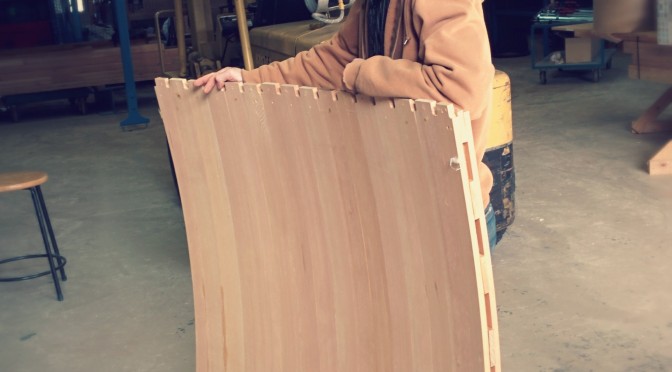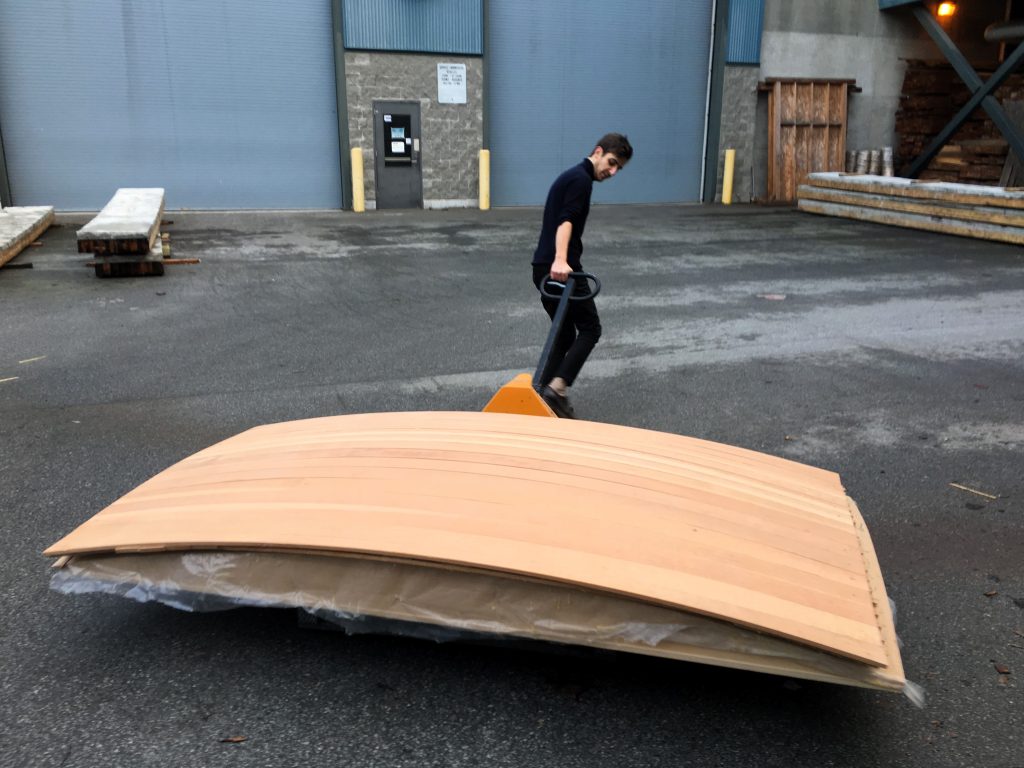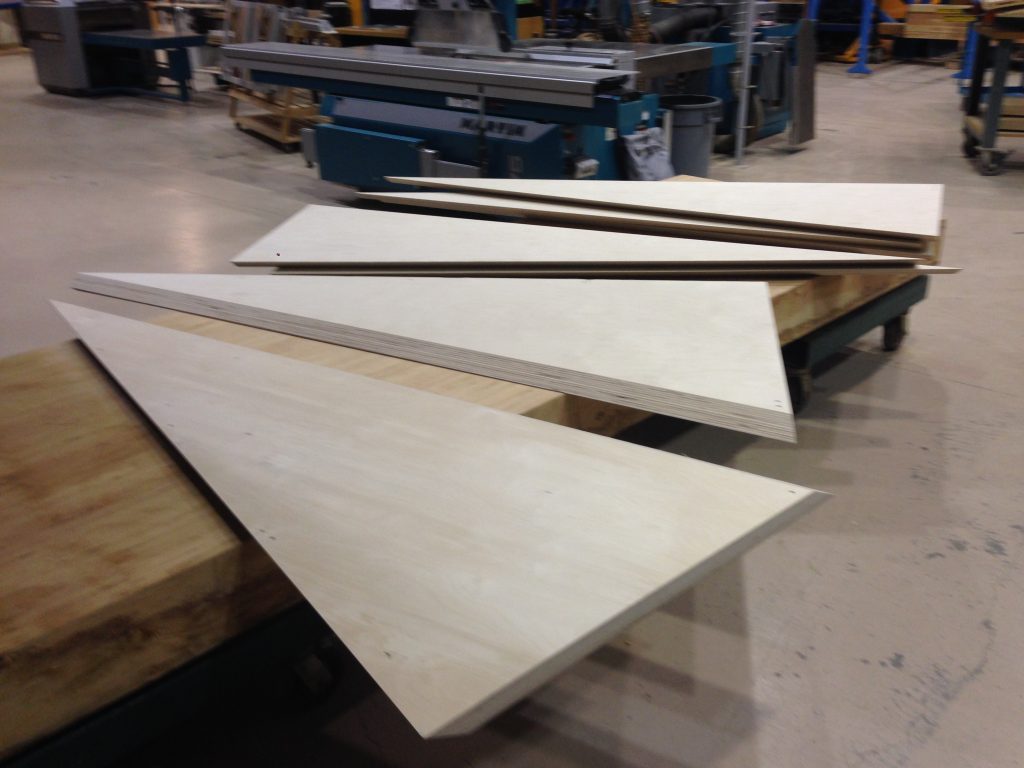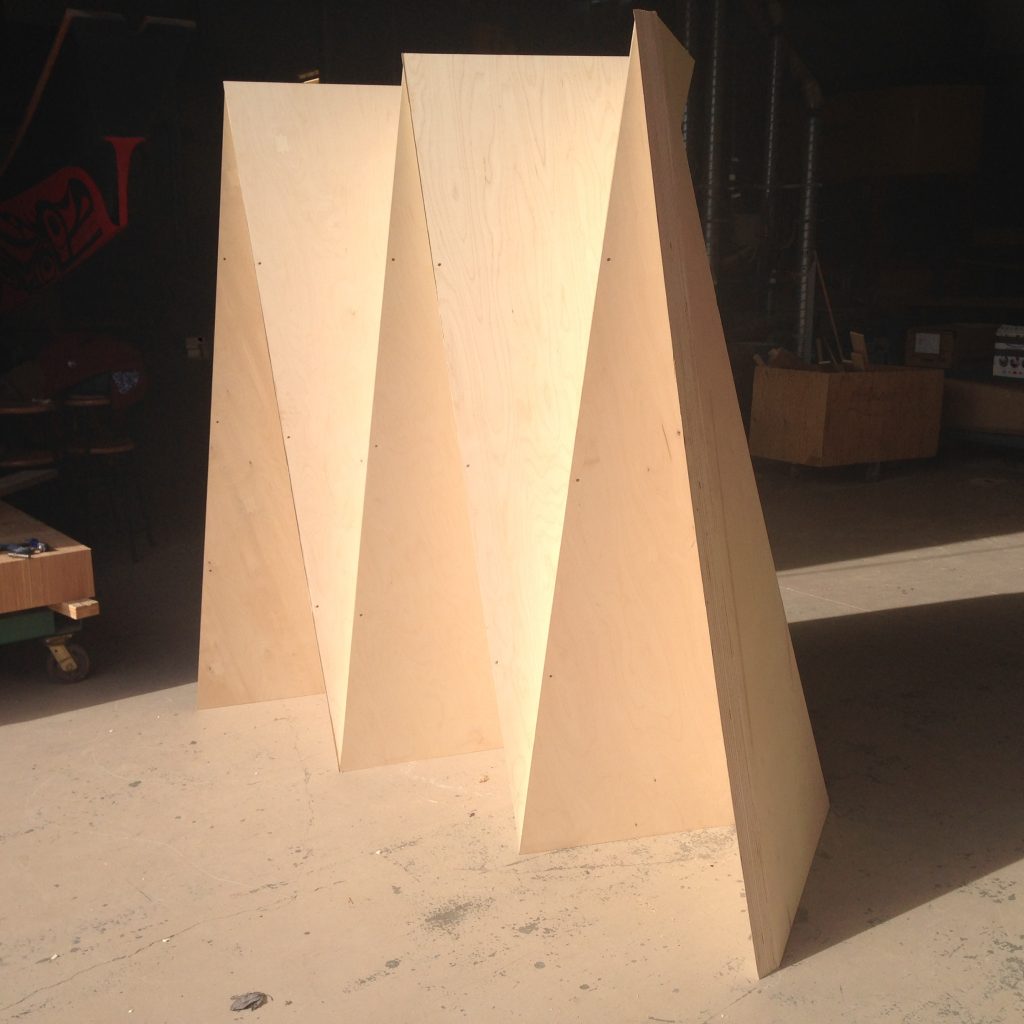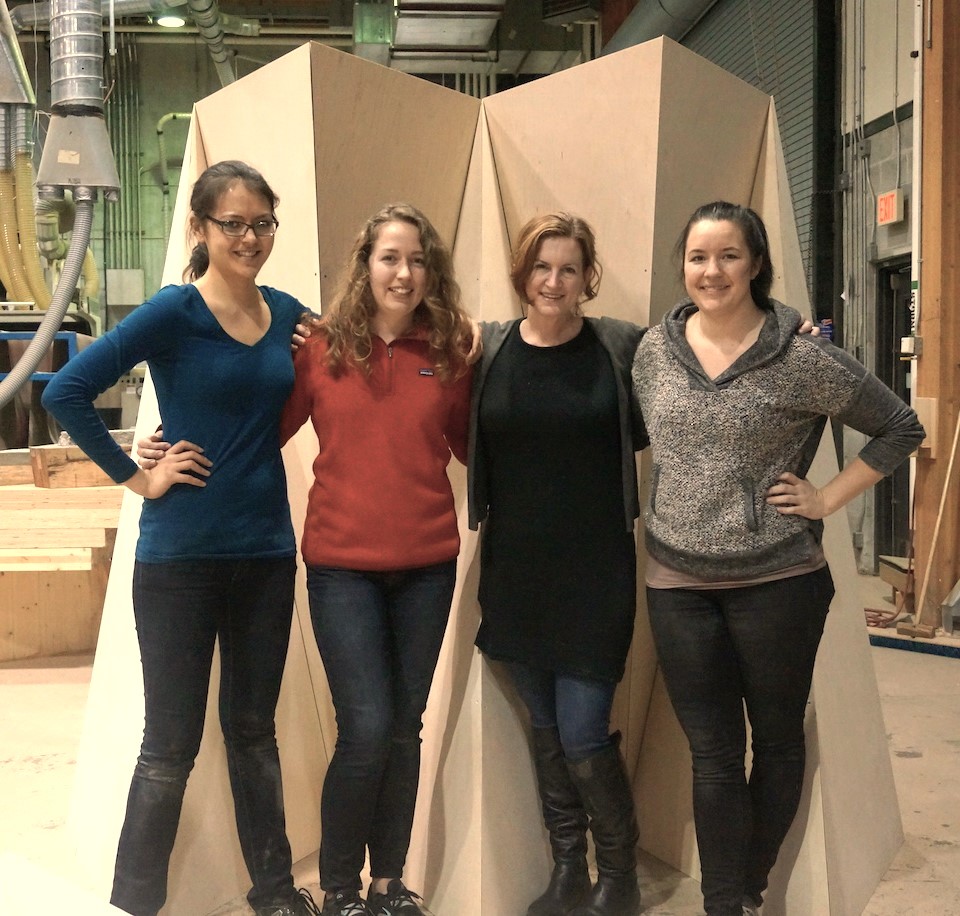In collaboration with Thomas Tannert (UBC Civil/Wood Sciences), Oliver Neumann (UBC SALA) and Iain MacDonald (CAWP) we have completed research on large scale wood surface structures. The larger intention of this research and the future research trajectory is to expand the conception of wood as a structural building material, encouraging its broader use both within Canada and in emerging markets.
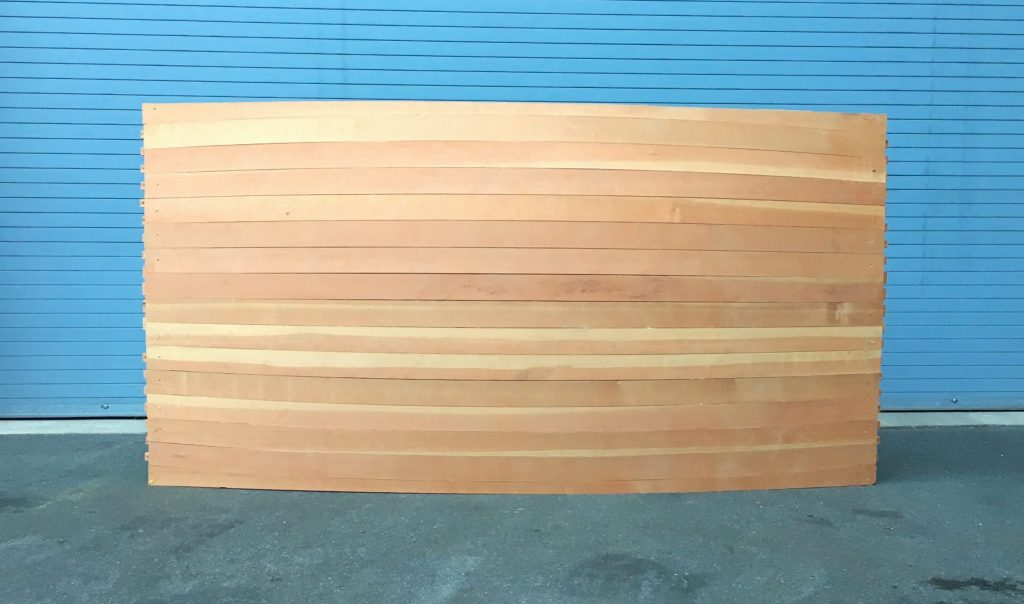
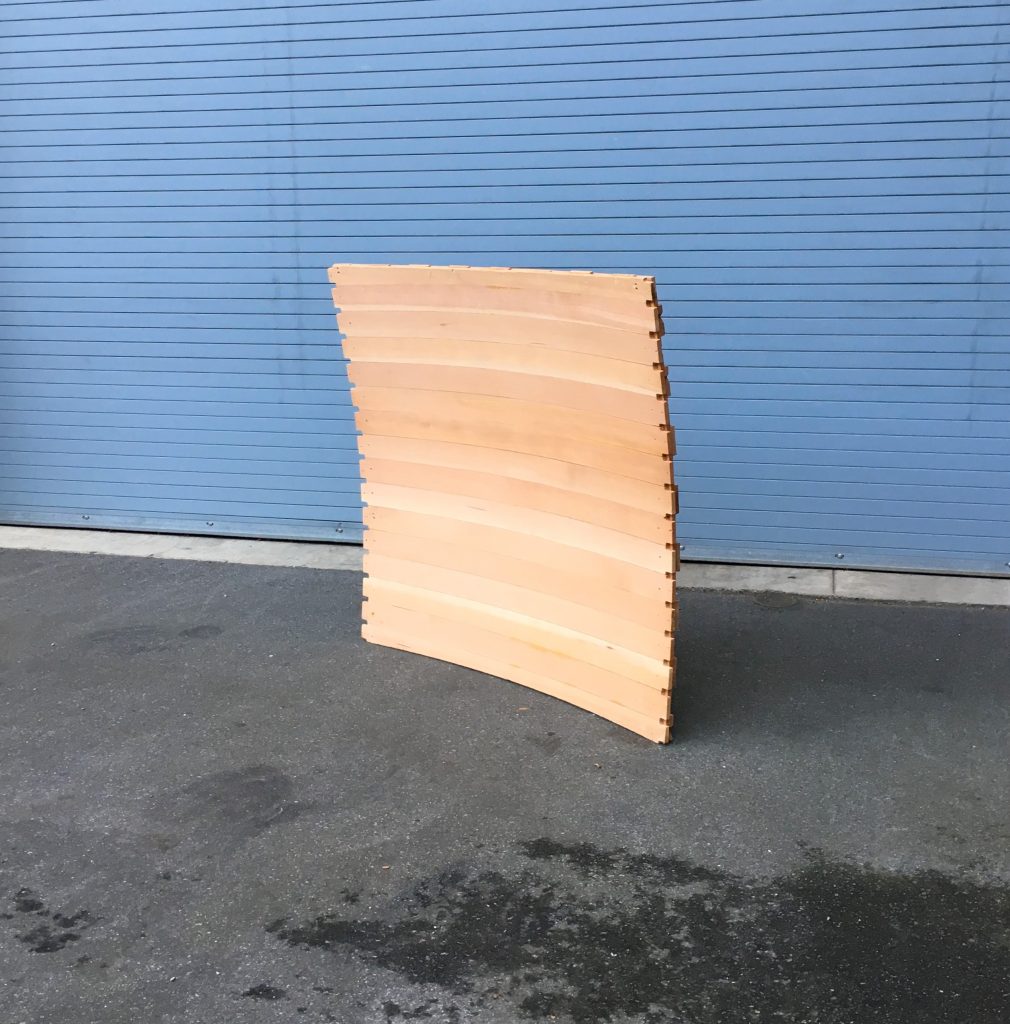
When architects and engineers desire a curved surface they should think of wood as the material that can create these new architectural forms. Shell, lapped, and folded plate structures using CLT show potential for spanning larger interior spaces such as those in gymnasiums, community centres, schools, churches general large entry spaces and circulation areas. They provide large column free spans, and are highly structurally efficient. Architects have a new interest in creating curved and flexible surface structures since they now have digital tools which can easily design, draw and produce construction documents for such structures however they have a difficulty manifesting these designs. With current digital fabrication tools, wood has the potential to be the material that is able to easily and inexpensively produce these curved forms. However, research needs to be done in order to demonstrate the feasibility of engineering and fabricating these designs.
The potentials of digital modeling, simulation and fabrication provide the architect with an increased ability to design curved and complex structures. Wood has the potential to respond well and facilitate these designs but this has not yet been fully explored due to the newness of the fabrication technologies and the engineering uncertainties that come along with engineering and fabricating such a structure. CAWP and UBC are well positioned to be leaders and demonstrate the fabrication as well as the engineering techniques for approaching such structures. This research begins the work of demonstrating this new technology and the expanded vocabulary of architectural structures that are possible in wood.
Download the full research report here.
Publications
AnnaLisa Meyboom, Oliver Neumann & Thomas Tannert. Extending the Vocabulary of Wood: Research in Large Scale Shell Structures in Wood. Real Time – Extending the Reach of Computation. The Association for Education and Research in Computer Aided Architectural Design in Europe (eCAADe). Vienna, Austria. September 16-18, 2015.
Alexandra Cheng*, Thomas Gaudin, AnnaLisa Meyboom, Oliver Neumann and Thomas Tannert. Large Scale Wood Surface Structures. 3rd Annual International Conference on Architecture and Civil Engineering (ACE 2015) Singapore, 13-14 April, 2015.

